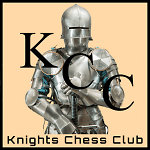
Knights Chess Club
Welcome To All, Young And Old
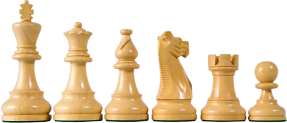

How To Write Descriptive Chess Notation
Descriptive notation is a method for recording chess games, which at one time was the most popular notation used. Though seldomly used today it was the notation used by many great grandmasters and world champions of the past. A few such grandmasters included world champions Steinitz, Lasker, Capablanca, Alekhine, Bobby Fisher, and many others. Descriptive Notation better embraces a more romantic day when chess pieces were called by name, as were the squares of the chess board associated with the pieces. Most people today use algebraic notation to record chess games, which is considered simpler and less confusing, but has the drawback of depersonalizing notation. A loss in some measure to the heritage of chess, and the dignified use of referring to the squares of the board by the names of the pieces.
Naming the Pieces
In descriptive notation the name of each piece is based on its initial, with the exception of the Knight where "N" is used. English speaking players use:
- K for King
- Q for Queen
- R for Rook
- B for Bishop
- N for Knight (Kt is obsolete)
- P for Pawn
Naming the Squares on the Board
The chess board has 8 Rows, and 8 Columns. These rows are called RANKS, and the columns are called FILES. So you have 8 RANKS from bottom to top, and 8 FILES from left to right. See the image provided.
The RANKS (rows) and FILES (columns) have names. The bottom RANK is called the 1st RANK. The second RANK from the bottom is called the 2nd RANK, and so on up to the 8th RANK.
The FILES are named according to the chess piece that would occupy each square in the first rank. So starting from the left and proceeding right when sitting behind the white pieces for example, the FILES are called the "QR" (Queens Rook) File, the "QN" (Queens Knight) File, the "QB" (Queens Bishop) File, and so on to the "KR" (Kings Rook) File on the far right.
 Squares on the board are named according to what we have learned about the file names and rank numbers. For example, the 2nd square up on the "QN" (Queens Knight) file is the QN2 square. The 3rd square up on the QB file is the QB3 square. The 8th square up on the KR file is the KR8 square, and so on for any square on the chess board.
Squares on the board are named according to what we have learned about the file names and rank numbers. For example, the 2nd square up on the "QN" (Queens Knight) file is the QN2 square. The 3rd square up on the QB file is the QB3 square. The 8th square up on the KR file is the KR8 square, and so on for any square on the chess board.
Playing White or Black
It doesn't matter whether you are playing with the white or the black pieces. The 1st Rank is always in front of you, and the 8th Rank is always on the other side of the board.
Some Notation Attributes to be Familiar With
Before going any further lets take a moment to share some expressions. Placing any of the following expressions after a written chess move means:
!! — Brilliant move
! — Good move
!? — Interesting move
?! — Dubious move
? — Poor move
?? — Blunder
+ — Check (the King is in check)
++ — Check Mate
e.p. — en passant (taking a pawn en passant)
Other Special Notation
0-0 — Castles King Side
0-0-0 — Castles Queen Side
x — Means captures. PxP (Pawn takes Pawn)
= — used when a pawn reaches the 8th rank and turns into a piece. Example: P-K8=Q
Writing Results
1-0 means White wins
0-1 means Black wins
1/2-1/2 means the game is a draw
Written after the last move of the game.
Writing Down Your Moves
Remember, whether you are sitting behind the white or black pieces writing moves; always write moves as if you are sitting with the first rank in front of you and the 8th rank on the other side of the board. See the demonstration below.
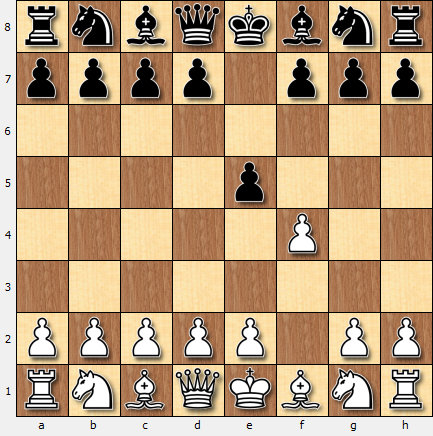
1. P-KB4 P-K4
White moves a pawn "P" on the King Bishop "KB" file to the 4th square.
Black moves a pawn "P" on the King "K" file to the 4th square.
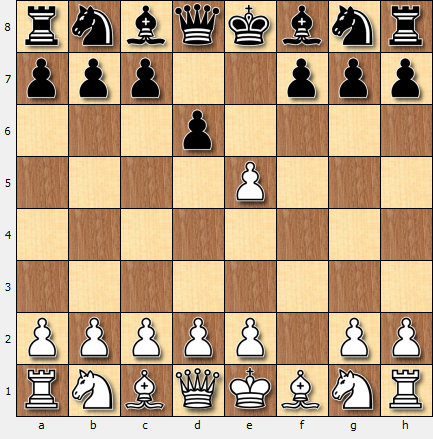
2. PxP P-Q3
Whites pawn "P" on "KB4" takes "x" blacks pawn "P" on whites "K5" square.
Black moves a pawn "P" in the Queen "Q" file to the 3rd square.
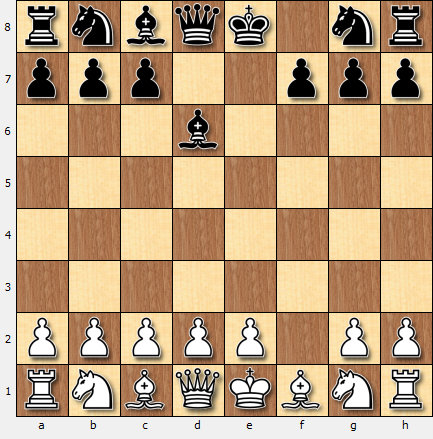
3. PxP BxP
Whites pawn "P" on "K5" takes "x" blacks pawn "P" on whites "Q6" square.
Blacks Bishop "B" on "KB1" takes "x" whites Pawn "P" on blacks "Q3" square.
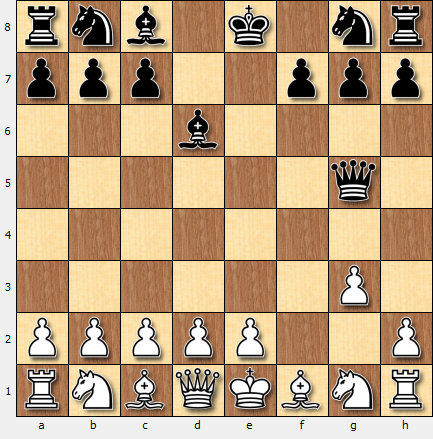
4. P-KN3 Q-N4
White moves the pawn "P" on the King Knight "KN" file to the 3rd square.
Blacks Queen "Q" on "Q1" moves to the 4th square on the Queens Knight "QN" file.
It is not necessary to write Q-QN4, though that would be correct, because there is only one N4 square the Queen can move to.
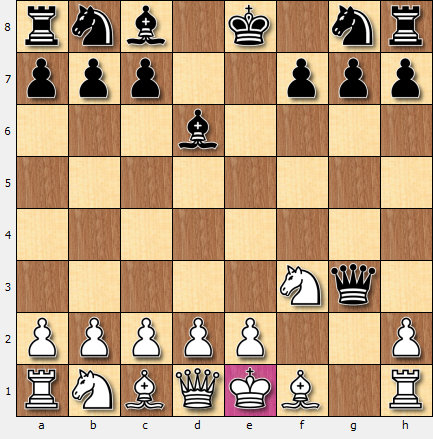
5. N-KB3 QxNP+
Whites Knight "N" on "KN1" moves to the 3rd square on the King Biship "KB" file.
In this case white must write N-KB3, and not just N-B3, because whites other Knight can also go N-B3 (N-QB3). So this avoids confusion.
Blacks Queen "Q" on "N4" takes "x" whites Pawn "P" on blacks "KN6" square checking the white King.
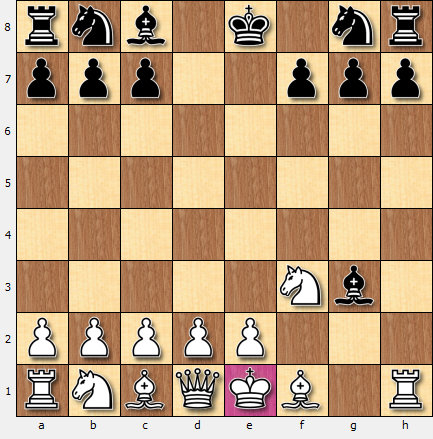
6. PxQ BxP++
Whites pawn "P" on "R2" takes "x" blacks Queen "Q" on whites "KN3" square.
Blacks Bishop "B" on "Q3" takes "x" whites Pawn "P" on blacks "KN6" checkmating the white King.






